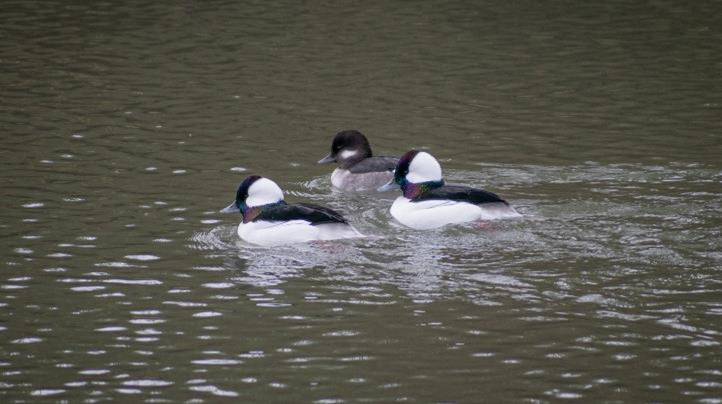Bucephala albeola

Perhaps the Wood Duck is the best-known duck that nests in trees, but it has good company in that category with the Bufflehead, North America’s smallest diving duck.
Habitat
Look for Buffleheads during migration in spring on the first lakes and rivers to be free of ice, and the last to freeze over in fall. Over summer they nest on ponds and lakes in the boreal forest and aspen parkland across Canada, Alaska and isolated pockets of the western United States. Migration takes them to coves, harbours, estuaries, and beaches, along the coasts, and inland ponds, lakes, and river bays from the Great Lakes south to northern Mexico.
Food
Buffleheads dive for aquatic invertebrates, crustaceans, and mollusks. In freshwater they mostly eat insects, and other invertebrates, such as snails. In saltwater, they eat things such as shrimp, crabs, snails, and mussels. They eat some plant seeds, mainly from pondweeds and bulrushes, in fall and winter.
Behaviour
Buffleheads are excellent swimmers and divers and spend almost all their time on the water. Their powerful diving legs are set back on their bodies, meaning they must run on the water first to take off. Underwater they use their feet to swim quickly and catch their prey. A cavity nester, Buffleheads need water with trees nearby. They mainly use old nests made by Northern Flickers. Their set-back legs make walking awkward, so leading ducklings to water from nests is one of the few times they are seen on dry land.
Conservation
Prior to the protection of the Migratory Bird Convention, Buffleheads did suffer low numbers from over hunting. Proper management today has led their population to increase to healthy numbers.

